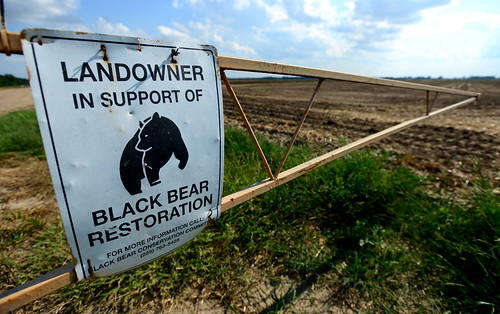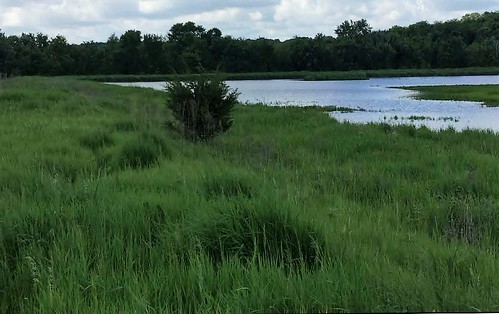
Twenty-five years ago, landowners in Quitman County, Mississippi took action – one even the state conservationist with USDA’s Natural Resources Conservation Service (NRCS) at the time didn’t think they’d take. Fast forward to 2018, and thousands of other landowners have joined in.
That action was placing their land into wetland easements.
Back in late 1992 and early 1993, Mississippi landowners in the Delta region decided to work with NRCS to enroll parts of their land that were too wet to farm into wetland easements funded through the Farm Bill. That easement was the very first for NRCS and started the momentum for 25 years of protecting wetlands and critical agricultural lands.
“I didn’t think the farmers in the Delta would plant their land back regardless of how wet it was, because they had just spent money clearing it up. But, boy, was I wrong,” said former NRCS Mississippi State Conservationist Pete Heard. “We had several applicants that put their land in. We were amazed at the amount of work we had in that county.”
“Once they got rid of their wettest, worst land, it improved their operations quite significantly because they were farming their best land – they didn’t have to go back in and replant or lose crops,” Heard said.
Hot off the heels of the first easement, was the second one in Decatur County, Iowa. Roughly 60 acres of floodplains were placed into a wetland easement. This wetland, adjacent to a river and two creeks, provided flood relief for the town of Leon and wildlife habitat for many species.
Benefits of Wetlands
Wetlands improve water quality downstream, protect nearby towns from flooding, enhance and protect wildlife habitat and provide outdoor recreational and educational opportunities.
Wetlands are important to protect because, although they only cover about five percent of the continental U.S., a half of all North American bird species utilize wetlands for feeding or nesting while more than one third of all threatened or endangered species are dependent on wetland habitat. Wetlands also play host to nearly one-third of our plant species on Earth.

Since the early 90s, NRCS easement programs have been extremely popular, especially in the south. Louisiana, Mississippi and Arkansas recently celebrated the protection of 700,000 wetland acres. In fact, the restoration of wetlands in these states were critical to the recovery of the Louisiana black bear.
Farm Bill-funded conservation easements came about as this species was in peril, and over the past 25 years, they have enabled the species to fully recover. When the U.S. Fish and Wildlife Service removed the Louisiana black bear from the list of threatened and endangered species in 2016, the agency credited the work of private landowners using easements as the main reason for the bear’s recovery.

Other Easement Options
Wetland easements are just one type of easement offered by the Farm Bill. Expanding development and population pressures pose a threat to keeping farmland in agricultural production. To address this threat, NRCS offers easements to agricultural producers to protect working croplands and grasslands. These easements protect the long-term viability of the nation’s food supply by preventing conversion of productive working lands to non-agricultural uses. They also help keep lands in family hands while providing an enhanced opportunity to keep productive land available for entry into farming through increased availability of affordable land for young, beginning, veteran and under-represented farmers.
4.4 Million Acres Protected
Working together, NRCS, partners and landowners have come a long way since that first wetland conservation easement in Quitman County. NRCS worked with landowners to protect more than 4.4 million acres of wetlands and agricultural lands, a value of over a billion dollars in a diversified real estate portfolio that has resulted in improved soil health, water and air quality and wildlife habitat. Those lands have 50,000 miles of property boundaries, which would stretch twice around the earth.

In 2018, NRCS is celebrating 25 years of conservation easements: celebrating landowners and producers that want to leave the land better than they found it for their children and grandchildren; celebrating farmers being able to keep their working lands working for the millions of Americans and people around the world that depend on the fruits of their labor; and celebrating the power of voluntary private lands conservation.
Learn more about Agricultural Conservation Easement Program. If you’re interested in exploring conservation easements for your property, contact your local USDA service center.

